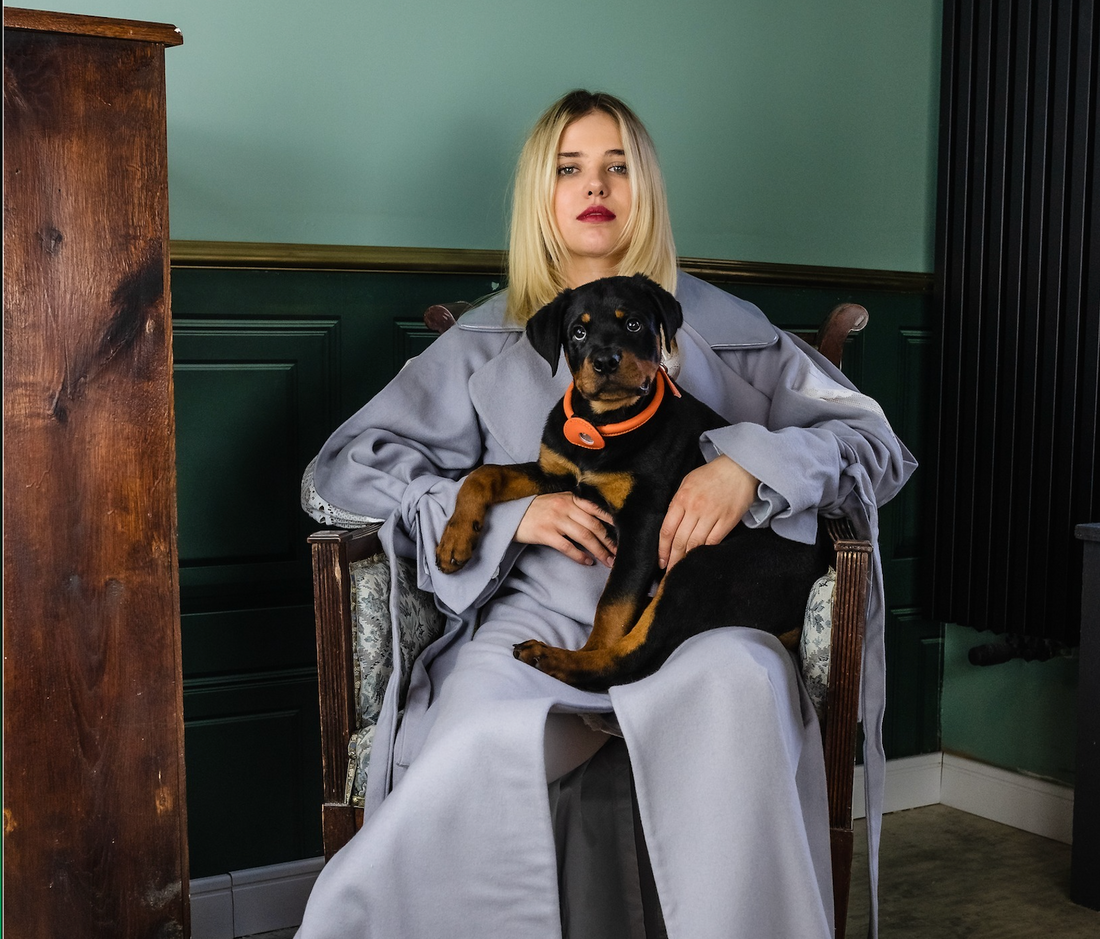
Don't be deceived. The three questions for a 'luxury' leather dog collar:
The word 'luxury' is overused.
And when did 'luxury' start being used to describe a leather dog collar?
Sure, it works for things we typically see as luxury items. Shoes, handbags, watches, furniture, high-performance cars, and yachts.
But a dog collar? Yes. A gorgeous, handmade leather dog collar, made to last and that has a "wow" factor can now be considered a luxury item.
So, anticipate paying more. But how can you be sure the leather dog collar you choose actually has the qualities that distinguish it as a genuine luxury item? If they're calling it 'luxury', it doesn't mean it is.
Here are three questions to help you identify the truly excellent and functional, from the completely fake.
1. Is it made from genuine leather?
A lot of leather is advertised as 'genuine'. However, many leather accessories are made of low-grade or reconstructed leather. Consider bonded leather, for instance.
These are pieces of leather that are glued together and re-formed into a cohesive shape. This is the soft leather used in an inexpensive belt you can buy at a market (with 'Genuine Leather' stamped on the inside).
It's also the soft leather used on a covered journal, cardholder, wallet, watch strap, or an iPhone case.
It's similar to mdf (bonded wood particles and sawdust) pretending to be wood. The color, pattern, and texture can be convincing, but it's not "real leather". You wouldn't call mdf solid oak.
If you find a 'luxury leather dog collar' that is very cheap, that's a strong sign that the item is mass-produced, and the leather is the lowest-grade available. You definitely want to avoid bonded leather for your dog's collar.
2. Where is it made?
Like most things, a lot of products are made cheaply in distant places, with unclear working conditions. That doesn't align with the idea of luxury. Instead, luxury implies generations of craftsmanship, care, and things made by hand, individually. Not a dehumanizing assembly line in an enormous, brightly lit factory, with exploited workers in miserable conditions.
The origin of the leather is essential. Leather is a byproduct of the food industry. In Europe, there are strict animal welfare controls, plus rules to make sure chemicals and waste products from tanneries are disposed of safely.
It will cost more to source leather from a tannery in the UK, Belgium, or Italy. However, this assures animal welfare, environmental controls, and fair, modern working conditions.
This partly explains the term 'reassuringly expensive'. Moreover, if you're paying for a luxury good, you want to be sure you are doing so with a clear conscience.
3. Is it stitched or riveted?
Rivets are metal pieces that are hammered into place to hold things together. Think of how the straps on a cheap sports bag are attached. Rivets are common in mass-produced synthetic dog collars and leads—and that's fine if you only need something affordable and basic.
But to use rivets on a luxury leather dog collar? Well, that's not craftsmanship, and the word 'luxury' shouldn't be involved. It's just hammering things together. Rivets definitely have their place. But not in the weight-bearing parts of an item that claims to be luxury.
Instead, look for items that are stitched, either by machine or by hand. If stitched, what kind of guarantee does the maker provide? Sure, it's a little crazy to provide a guarantee on any product for dogs—because dogs damage things. However, for a luxury leather dog collar, there is only one company I know of that provides a lifetime stitching guarantee.
https://nexapaw.shop/collections/soft-leather1

